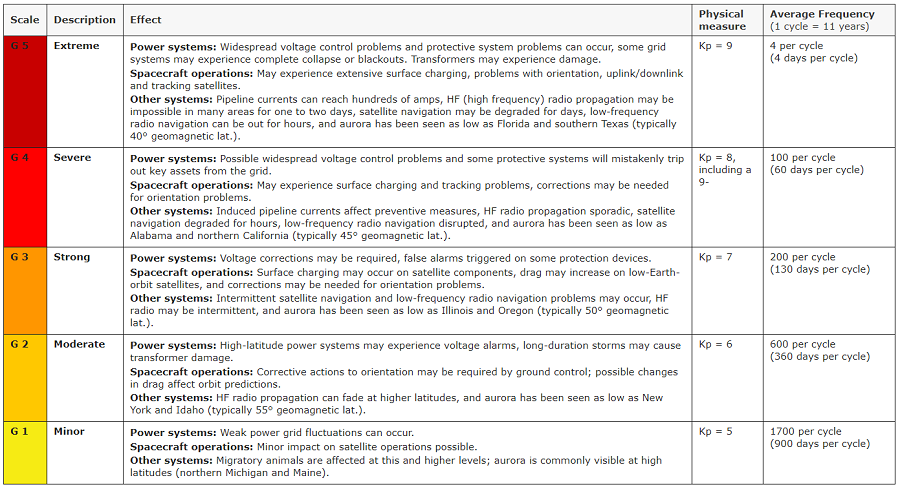
Due to an unfolding geomagnetic storm, the NOAA Space Weather Prediction Center has issued a bulletin warning of “strong to extreme” conditions which could drive a brilliant display of Northern Lights, or aurora, across places that normally don’t see them; such a storm could also prove to be damaging to various systems, especially at northern latitudes, primarily poleward of 50 degrees Geomagnetic Latitude.
The SWPC says a variety of impacts could be felt due to the arriving Strong to Extreme Geomagnetic Storm. The first is with induced currents; power system voltage irregularities are possible and false alarms may be triggered on some protection devices. With navigation systems, there will be intermittent satellite navigation (GPS) problems, including loss-of-lock and increased range error. There will be radio interference and blackouts; high frequency radio may be intermittent. Above Earth, spacecraft systems could experience surface charging which leads to increased drag on low Earth-orbit satellites; orientation problems may occur. And lastly, the aurora may be seen as low as Pennsylvania to Iowa to Oregon.
The K-index, and by extension the Planetary K-index, are used to characterize the magnitude of geomagnetic storms. The SWPCS says that Kp is an excellent indicator of disturbances in the Earth’s magnetic field and is used by SWPC to decide whether geomagnetic alerts and warnings need to be issued for users who are affected by these disturbances. Beyond signifying how bad a geomagnetic storm’s impact can be felt, the Kp index can also help indicate how low the aurora will be. In this case, this current storm is expected to have a Kp index of 7 or greater.
This activity suddenly popped-up from solar unrest that occured yesterday and the day before. It appears several coronal mass ejections (CME) erupted from the Sun , with model guidance suggesting Earth-directed components to a few of them. In a bulletin issued this afternoon, the SWPC wrote, “CMEs took place from the southwest area of the Sun to include one associated with a C4 flare from NOAA/SWPC Region 2887 at 01/2133 UTC (02/1:33am EDT). This was followed by a full halo CME related to an M1 flare (R1-Minor Radio Blackout) from Region 2891 at 02/0301 UTC (02/7:01am EDT) near center disk. Confidence in a measure of Earth-directed components to these CMEs is moderate; while there is less confidence in timing and intensity.”
This latest solar event is unfolding just days after a similar blast impacted Earth over Halloween weekend. It is possible this event may trigger an even brighter, more south aurora show across the Northern Hemisphere. While there are fears that a future blast from the sun will disrupt electricity, communication, and internet lines for weeks, this event does not seem to have that type of potential with it.
